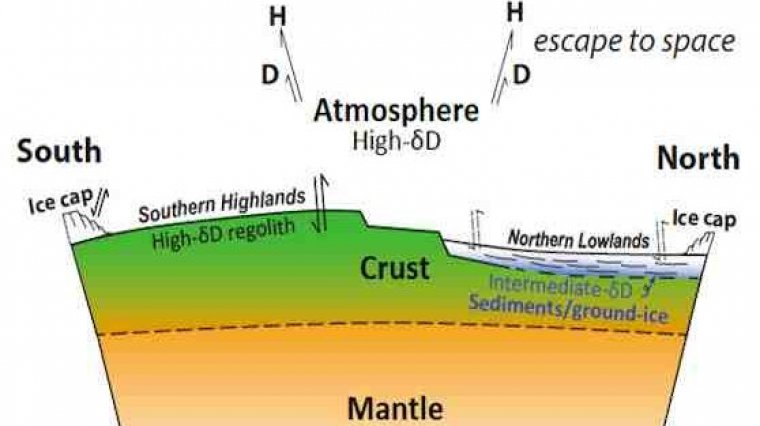| News / Space News |
New Evidence for a Mars Water Reservoir
NASA | DECEMBER 21, 2014
NASA and an international team of planetary scientists have found evidence in meteorites on Earth that indicates Mars has a distinct and global reservoir of water or ice near its surface.

Recent research provides evidence for the existence of a third reservoir that is intermediate in isotopic composition between the Red Planet’s mantle and its current atmosphere. ![]()
Though controversy still surrounds the origin, abundance and history of water on Mars, this discovery helps resolve the question of where the “missing Martian water” may have gone. Scientists continue to study the planet’s historical record, trying to understand the apparent shift from an early wet and warm climate to today’s dry and cool surface conditions.
The reservoir’s existence also may be a key to understanding climate history and the potential for life on Mars.
YOU MAY ALSO LIKE


